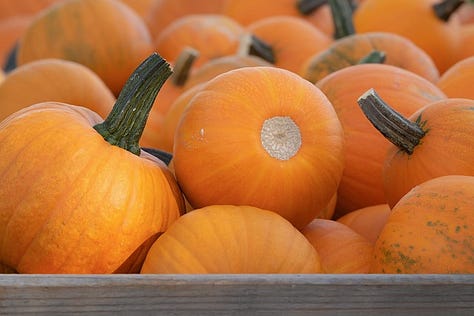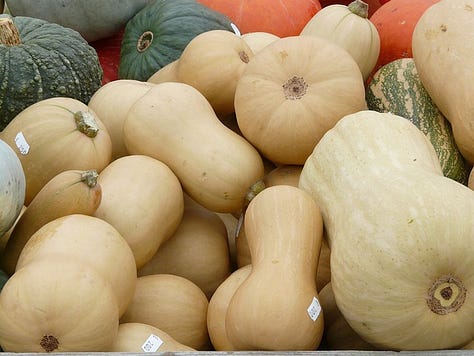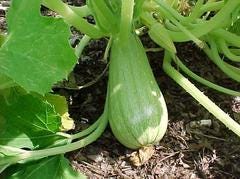Live Fully Nourished # 023
New recipe: How to Make Creamy, DreamyPumpkin Risotto, and Everything Else You Need to Know to Make it Like A Pro (Right here, keep scrolling 👇)...
Welcome to this week's installment of Live Fully Nourished. I’m Kymberley - the coach, cook, creator, and publisher of GfreeDeliciously.
New recipe: How to Make Creamy, Dreamy Pumpkin Risotto
If you're a fan of creamy, dreamy, comforting risotto and pumpkin's rich, earthy flavors, then you're in for a treat with this week's recipe post for How to Make Creamy, Dreamy Pumpkin Risotto.
And while risotto may seem like a complex dish only fit for restaurant chefs, you can easily make a delicious pumpkin risotto right in your kitchen with the right tips and tricks.
Of course, I’ve tried to cover most of the basics over there, where you’ll get details about:
What is Risotto, and Why Include Pumpkin?
How to Make Pumpkin Risotto
Ideas for Serving Pumpkin Risotto at Thanksgiving
Creative Uses for Leftover Pumpkin Risotto
Some Wine and Beverage Recommendations for Pairing with Pumpkin Risotto
And…Tips for Storage, Preserving, and Reheating Pumpkin Risotto
So, when you’re done reading here (keep scrolling 👇), you should definitely check out the recipe post.
And now for (drum roll…🥁)…
Everything “Else” You Need to Know to Make Pumpkin Risotto Like a Pro
In this installment of Living Fully Nourished, I attempt to unveil everything “else” you’ll need to know to cook pumpkin risotto like a pro, from selecting the perfect pumpkin to achieving the ideal balance of flavors.
Whether you're a seasoned risotto cook or a beginner in the kitchen, these tips and tricks will help you create this Fall-inspired seasonal dish that will impress even the toughest of critics. So, let’s put on our apron and get into it!
The Perfect Pumpkin:
Pumpkins are abundant and versatile, with a wide range of varieties, each offering a unique flavor profile and texture. While some pumpkins are better suited for carving or making pies, others lend themselves exceptionally well to savory dishes like risotto.
The ideal pumpkin risotto delivers a smooth and velvety texture, complemented by a subtly sweet and nutty taste. This balance of flavors enhances the creamy richness of the risotto, making it a genuinely compelling dish. I recommend experimenting with different kinds to find your favorite. Following is a list of the best pumpkin varieties I’ve discovered to use in this dish.





Choosing the Right Variety for Risotto
Sugar Pie Pumpkin (Cucurbita pepo) One popular choice is the sugar pumpkin, also known as a pie pumpkin. This variety's size is smaller, with a firm yet tender flesh that easily lends itself to purees and sauces. Its subtle sweetness adds depth and complexity to risotto, while its creamy texture binds the dish together beautifully.
Butternut Squash (Cucurbita moschata) Although technically it’s not a pumpkin, butternut squash is often used as a substitute due to its similarities in taste and texture. It has a vibrant orange flesh that becomes very creamy when cooked. Butternut squash's sweet and nutty flavor pairs well with risotto, creating a rich, comforting dish.
Kabocha Pumpkin (Cucurbita maxima) For those seeking a vibrant and colorful twist, the kabocha pumpkin is an excellent choice. With its bright orange flesh that becomes rich and buttery after cooking, this Japanese variety introduces a pleasant sweetness and velvety consistency to your risotto.
Delicata Squash (Cucurbita pepo) Another excellent option is the delicata squash, also known as sweet potato squash, which is a small, oblong-shaped winter squash with thin, edible skin that’s pale yellow with dark green stripes. It has a creamy texture and a sweet, slightly nutty flavor that pairs well with the rich risotto base without overpowering other flavors, creating a more delicate and balanced dish.
Cinderella Pumpkin (Rouge Vif d'Etampes) Cinderella pumpkin, a French heirloom squash named for its resemblance to the pumpkin in Cinderella's carriage, has a beautiful bright orange-red color and a bumpy exterior. Its flesh is firm, sweet, and relatively dry, making it an excellent choice for risotto. The natural sweetness of Cinderella pumpkin adds depth to the risotto and balances the other flavors perfectly. Because Cinderella pumpkins are an heirloom variety, you’ll most likely want to look at farm markets, pumpkin patches, and U-pick farms to find them. But you could also grow them from seeds easily found through many sources when googled.
When choosing a pumpkin or squash for your risotto, select one with firm, unblemished skin. It should feel heavy for its size, indicating that it has a high moisture content. Avoid pumpkins with watery or stringy flesh, as they can result in a soupy risotto.
My preferred way to prepare the pumpkin for risotto is to roast it in the oven until tender, then scoop out the flesh and mash it or puree it for a creamier texture. I’ve also cubed and boiled squash until fork tender, then drained it well before pureeing it or pressing it through a sieve. Alternatively, you can peel, seed, and grate or dice the pumpkin or squash before adding it to the risotto, cooking it with the rice until it softens and melds with the other ingredients.
Ingredient Spotlight: Exploring the Flavors of Pumpkin Risotto
First, let's talk about the star of the dish – the pumpkin.
Pumpkin adds a depth of flavor and creaminess to the risotto. You can use either fresh, roasted pumpkin or canned pumpkin puree. Fresh pumpkin can be roasted in the oven until tender or prepared in another method, as mentioned above, and then mashed into a smooth puree, giving the risotto a natural and earthy taste. On the other hand, canned pumpkin puree provides convenience and consistency in flavor. Whichever option you choose, you’ll want to remove any excess moisture to avoid mushy risotto.
Another key ingredient in pumpkin risotto is the rice.
Arborio rice is the most commonly used rice for risotto due to its high starch content, which creates a creamy texture when cooked. However, other short-grain rice varieties, such as Carnaroli or Vialone Nano, can also be used. These kinds of rice have a firm texture that holds up well to the cooking process, ensuring that the risotto maintains its structure.
The aromatic ingredients used in pumpkin risotto also enhance the overall flavor profile.
These can include finely chopped onions or shallots, garlic, and fresh herbs like thyme or sage. Sautéing these ingredients in butter or olive oil before adding the rice helps to release their flavors and infuse them into the risotto.
In addition to the pumpkin and rice, you can add various ingredients to give your pumpkin risotto a unique twist.
For example, mushrooms, such as cremini or shiitake, complement the pumpkin's earthiness and add an umami flavor. Sauté the mushrooms separately and then mix them into the risotto towards the end of cooking to preserve their texture.
To further enhance the flavors…
Consider incorporating cheeses such as Parmesan, Gruyère, or Fontina. These cheeses are rich and nutty in taste and melt beautifully into the risotto, adding a creamy and comforting element. Remember to stir the risotto constantly while adding the cheese to ensure it is evenly distributed.
Add some elements for texture and garnish.
Toasted pine nuts or walnuts provide a delightful crunch, while fresh herbs like parsley or chives lend a vibrant touch. For a touch of sweetness, consider adding a balsamic glaze drizzle, maple syrup, or a sprinkle of cinnamon.
10 Top Tips and Tricks for Cooking Pumpkin Risotto Like a Pro
Pumpkin risotto is a delicious and comforting dish perfect for the fall season. Its creamy texture and rich flavors make it an excellent choice for showcasing pumpkin's sweet and savory taste. If you want to impress your family and friends with your culinary skills, here are some tips and tricks for cooking pumpkin risotto like a pro.
Keep reading with a 7-day free trial
Subscribe to Live Fully Nourished @GfreeDeliciously to keep reading this post and get 7 days of free access to the full post archives.





